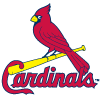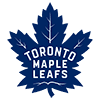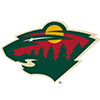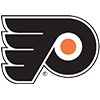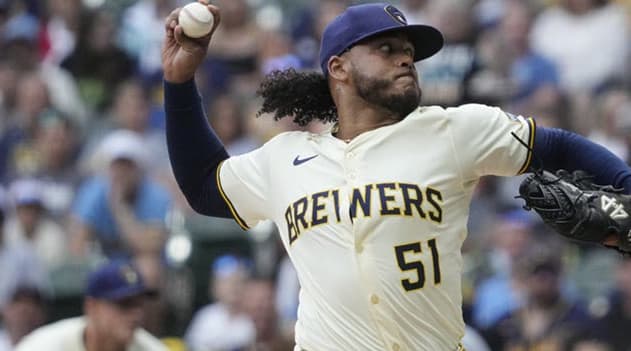In an era where the fascination with stars may be at its apex, the best player in baseball -- today, yesterday, this decade, and perhaps ever -- is an afterthought in the mainstream media.
When we look back at the first 25 years of the 21st century, Mike Trout should be mentioned in the same breath as LeBron James when legendary status is the topic.
Of course, in our circles, Trout's greatness is regularly acknowledged, even if it's still somehow underappreciated. Even here, we seem more likely to obsess over Trout's eventual decline than his present greatness.
As Jay Jaffe of FanGraphs wrote last month, Mike Trout Is Now an Average Hall of Famer.
Somehow, that headline feels like it undersells Trout's accomplishments to date.
Most weeks when I begin to narrow down the list of players to write up for this piece, I look at rolling leaderboards on FanGraphs. When I'm browsing the top hitters for any particular stretch, there is usually one extra row glued to the category headings.

Trout's last 30 days have featured an easy 40-homer, 40-steal pace with an OPS north of 1.100. His entire 2018 season has already been worth 4.8 wins -- 0.7 more than Jose Ramirez and Mookie Betts -- and more than a full win better than the rest of the players currently among the top-six in WAR among position players (Francisco Lindor, Manny Machado and Andrelton Simmons).
Entering Monday's games, Trout was second only to Mookie
In an era where the fascination with stars may be at its apex, the best player in baseball -- today, yesterday, this decade, and perhaps ever -- is an afterthought in the mainstream media.
When we look back at the first 25 years of the 21st century, Mike Trout should be mentioned in the same breath as LeBron James when legendary status is the topic.
Of course, in our circles, Trout's greatness is regularly acknowledged, even if it's still somehow underappreciated. Even here, we seem more likely to obsess over Trout's eventual decline than his present greatness.
As Jay Jaffe of FanGraphs wrote last month, Mike Trout Is Now an Average Hall of Famer.
Somehow, that headline feels like it undersells Trout's accomplishments to date.
Most weeks when I begin to narrow down the list of players to write up for this piece, I look at rolling leaderboards on FanGraphs. When I'm browsing the top hitters for any particular stretch, there is usually one extra row glued to the category headings.

Trout's last 30 days have featured an easy 40-homer, 40-steal pace with an OPS north of 1.100. His entire 2018 season has already been worth 4.8 wins -- 0.7 more than Jose Ramirez and Mookie Betts -- and more than a full win better than the rest of the players currently among the top-six in WAR among position players (Francisco Lindor, Manny Machado and Andrelton Simmons).
Entering Monday's games, Trout was second only to Mookie Betts in dollars earned according to the RotoWire earn values tool, which currently favors Betts at $52 to Trout's $49.
Somehow, he's been better than ever through the first third of 2018, and somehow, that is often the subtext when it's even mentioned at all.
Risers
Jose Ramirez, 2B/3B, CLE -- It's difficult to underrate elite players, but that may have been with Ramirez this draft season despite an NFBC ADP that checked in at 20th overall. Ramirez's power spiked in 2017, as he launched 29 homers after swatting 11 in the same number of games in 2016, and yet he still managed to run frequently, swiping 17 bases with the added power after finishing with 22 the year prior. The all-too-simple analysis was that Ramirez seemed unlikely to flirt with 30 homers again, because there was a very limited amount of power output in his profile throughout his time in the Indians' minor-league system. In addition to overlooking his excellent control of the strike zone as a prospect, that view looked past some solid slugging percentages along the way, including a .441 mark in the International League (Triple-A) as a 21-year-old in 2014.
Ramirez's flyball rate has ticked up to a career-high 42.5% in 2018, which combined with another increase in pull rate, has enabled him to max out his power production (.624 SLG, 18 HR in 257 PA). Perhaps most impressive about that feat, he's done that without increasing his strikeout rate (10.5% in 2018, career 10.9%) and while drawing walks at a career-best 13.6% clip. Also, the increased home-run rate hasn't clipped his contributions in the running game, as he's 7-for-9 through 57 games, which gives him a shot at reaching 20 if he maintains his current pace. To date, Ramirez has been a top-five player, and it would not be surprising at all if he establishes a top-five position in ADP in 2019.
Kyle Schwarber, OF, CHC -- The moratorium prohibiting me from writing or speaking about Schwarber has been lifted. This is much closer to the player I thought I was getting everywhere in 2017. Schwarber is hitting .262/.384/.518 with 11 homers and 28 RBI through 49 games this season, while showing the best plate discipline of his career with new bests in walk rate (16.7%) and strikeout rate (24.2%). As his career odometer rolls up to 1,000 plate appearances, we're looking at a player with a career 24.7% HR/FB, which bodes well for his chances of sustaining 30-plus homer pop even if he's often sitting against lefties. Moreover, the slimmed-down version of Schwarber has been less of a liability defensively this season, which gives him a slight nudge up in value since he's not an automatic late-inning defensive liability. I'm still taking the long-term 'L' here, as my high-end expectations for him included another 25-30 points in batting average, and being a top-60 hitter (which he's been thus far) a year ago wouldn't have prevented him from being a player that I consistently overpaid for.
Scooter Gennett, 2B, CIN -- It's strange to see Scooter Gennett lumped in with another $30+ players to this point, but he's tied for 14th among hitters in dollars earned in 2018 ($32) thanks to a .342 average, 12 homers, 41 RBI, 31 runs and a stolen base to this point. When does a player truly own his HR/FB rate? Gennett has kept his mark above 20 percent going back to the start of last season, and he hasn't been whiffing at an elevated clip in order to tap into his power. The biggest difference in his profile since last season has been an increased swing rate on pitches inside the strike zone, which is now sitting a career-high 75.3% (68.6% in 2017; career 72.2%). Opposing pitchers are throwing Gennett fewer first-pitch strikes than ever, and it appears as though he's leveraging that adjustment by taking advantage of favorable situations that arise later on in the at-bat.
Travis Jankowski, OF, SD -- The Padres' parade of outfielders has made a few appearances in the Rising section of this column this season, and Jankowski's May has turned him into one of the best first-half pickups of 2018. Jankowski is a good defender, capable of handling all three outfield spots, which allows him to co-exist in the lineup with Manuel Margot. Jankowski has started 23 of the last 28 games for the Padres, serving as the team's leadoff hitter for all 23 of those contests, and bumping Margot to the bottom-third of the order in the process. Jankowski went 7-for-9 on the basepaths in May, and he has the pure speed (tied for 10th in MLB in Sprint Speed) and team tendencies necessary to rank among the league leaders in stolen bases if he continues to start 90 percent of the Padres' games. Things will become more complicated once Wil Myers gets back from the DL, but Jankowski's on-base skills and defense should give him a leg up to continue playing regularly after Myers' return. Keep in mind that he's no more than three-category contributor with steals, runs and average as he'll pound the ball into the ground frequently, but his batting average upside his ticked up with the improved strikeout rate he's shown thus far (17.9%; career 25.3%).
Trevor Cahill, SP, OAK -- Cahill allowed four runs on 4.2 innings in his most recent start against the Royals, marking the first time this season that he's failed to complete five innings and the first time he's allowed more than three runs in a start. It's hard to believe that he's been this good, since Cahill was signed to a one-year deal by the A's after Jharel Cotton was lost for the season to a torn UCL in mid-March.
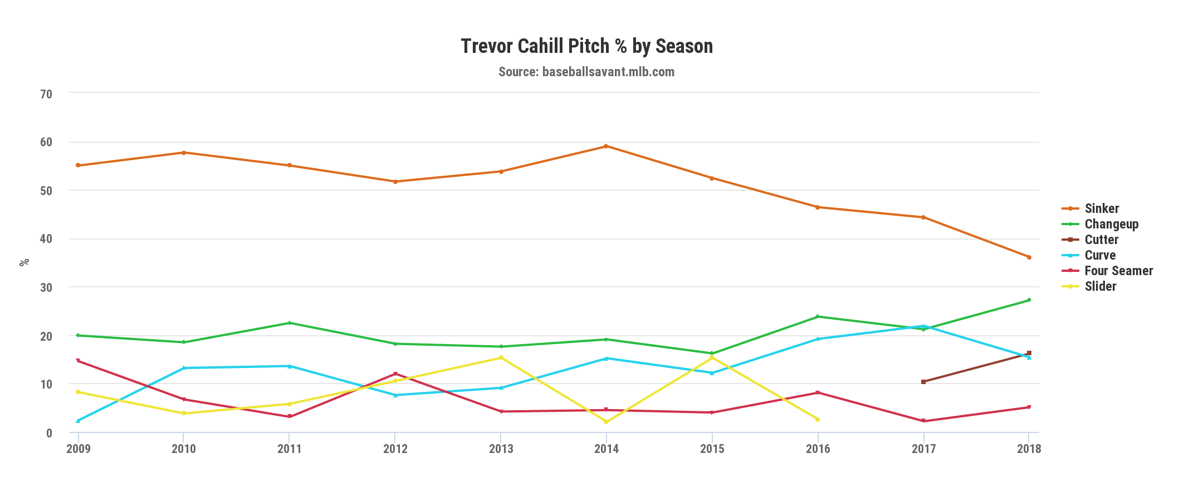
Players change over time, and as you see with the orange (top) line above, Cahill has been leaning much less on his sinker in recent years, and he's never thrown it less than he's thrown it in 2018. With fewer sinkers, Cahill has upped the usage of his changeup and curveball from pre-2016 levels), and added a cutter to the mix a year ago. Through eight starts, Cahill has the best swinging-strike rate (13.1%), walk rate (5.9%; career 9.5%) and strikeout rate (25.0%) of his career. Hitters are chasing his pitches outside of the zone more than ever before, and they're making less contact than ever while chasing. He's pushed his groundball rate back over 60 percent for the first time since 2015, and he's kept the ball in the park (0.74 HR/9) and his best rate since 2014. The underlying numbers point to some good fortune with the sinker to this point (.280 wOBA allowed, .321 xWOBA), but the pitch has been much more effective with less frequent usage than it was the last two seasons (.417 wOBA allowed in 2017, .387 wOBA allowed in 2016). Most projection system have him pitching an ERA above 4.00 and a WHIP above 1.40 the rest of the way, but there is enough going on here to consider the possibility that he's reinvented himself to a much better baseline.
Seranthony Dominguez, RP, PHI -- Dominguez has been lights out since getting the call from the Phillies in early May, recording 13.2 scoreless frames without issuing a walk to begin his big-league career. He's been used in a variety of roles by manager Gabe Kapler, picking up a pair of saves, six holds, and one win in relief over 11 career appearances. In addition bringing a plus-fastball to the table, Dominguez has a slider, sinker and changeup, which is listed as an average pitch (it seems to have improved) in many scouting reports.
Seranthony Dominguez, Filthy 88mph Changeup. 😷h/t @tanga20pic.twitter.com/FH5xLsJiaf
— Rob Friedman (@PitchingNinja) May 10, 2018
The saves volume might be light based on the flexible role, but Dominguez looks like the best weapon in the Philadelphia bullpen.
Fallers
Rafael Devers, 3B, BOS -- Over the last 30 games, Devers is hitting .184/.236/.359 with 31 strikeouts (103 at-bats). Earlier this season, Devers was the player I felt I had missed out on the most this draft season. The correct answer is/was: Ozzie Albies. The power output to begin 2018 is nearly in lockstep with the results from his 58-game stretch as a rookie last season, but a 68-point drop in BABIP has left him with a .226/.280/.401 through 57 games this time around. Devers' strikeout rate is up to 27.1% from 23.8%, but he's still drawing walks at an ample rate (7.2%). In searching for an explanation with the reduction in positive outcomes on the balls in play, Devers' batted-ball profile reveals an uptick in flyballs (from 35.6% to 40.3%) and a slightly elevated pull rate (from 34.5% to 37.4%). Among qualified hitters, Devers ranks 21st out of 215 qualified hitters in average exit velocity. He's started 55 of 60 games in the league's highest-scoring offense this season, and there are a lot of reasons to believe that big production is just around the corner.
Jay Bruce, OF, NYM -- At the time of the signing, I thought the Mets did OK with the three-year, $39 million deal Bruce agreed to this winter. A small part of the thinking was that he might see time at first base instead of the outfield, but most of the thinking was that he would be locked into the middle-third of a slightly improved lineup, with the chance to swat another 30 homers thanks to his combination of raw power and the juiced ball. Despite an increased whiff rate on fastballs (up from 16.5% to 23.4%), Bruce appears to be the victim of some bad luck, but that doesn't fully explain the lack of output to this point. Don't be surprised if the power pace the rest of the way closer to a 25-homer season (expect 16-18 the rest of the way) than the 33-36 he's totaled in each of the last two campaigns.
Jose Peraza, SS, CIN -- Without his 11-for-25 surge over the last week, Peraza's last 30 games would look even worse than the .233/.276/.276 line that he's put together during that span. Interestingly enough, 15 of the 23 games that top prospect Nick Senzel has played this season at Triple-A Louisville have been at second base, with the other eight coming at third base. It remains to be seen if the Reds will move someone else to eventually accommodate the arrival of Senzel, but Peraza seems to be hanging on to his role as the team's primary shortstop by a thread, as he's toting a sub-.300 OBP and grading out as a replacement-level player. At this point, it's easy to wonder if he's simply a utility player miscast as a regular.
Luis Castillo, SP, CIN -- Castillo finished the 2018 draft season as the 85th player off the board in NFBC drafts, placing him in the back of the top-25 among starting pitchers based on that cost. With an average fastball velocity that has dropped by more than two full miles per hour, Castillo is sitting at 95 instead of 97+ as he did upon arrival last season. His changeup has been one of the best pitches in the game in 2018, and he's generated an astonishing 49.2% whiff rate with it, but the lack of command with his four-seamer and his two-seamer has led to a spike in hard contact allowed through his first 13 starts. The baseline might not be as good as some had hoped on draft day, but Castillo's arsenal is too good for him to continue getting hit like this throughout the next four months.
Zack Godley, SP, ARI -- In addition to losing nearly one mph on his cutter and 1.5 mph on his curveball and sinker, Godley has struggled with walks in 2018, issuing them at an 11.2% clip. The humidor at Chase Field has had the intended effect, but Godley hasn't had the same arsenal that he was showing last season when he was one of the biggest surprises on the mound. Not surprisingly, the average exit velocity he's yielded to this point (88.7 mph) is a career-high, and a 2.5-mph increase from 2017. No projection system on FanGraphs has Godley delivering an ERA below 4.10 or a WHIP below 1.35 the rest of the way. I don't see a compelling reason to disagree.













